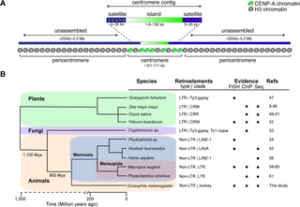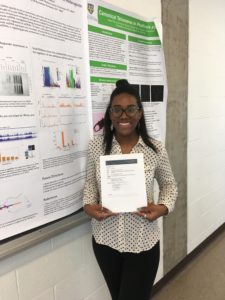Check out our new paper on the organization of Drosophila melanogaster centromeres. For this paper, our lab collaborated with Barbara Mellone’s lab (University of Connecticut) and Ting Wu’s lab (Harvard University) to discover all of the centromeres in D. melanogaster. Centromeres are genomic regions essential for proper chromosome segregation during cell division. They also are among the most rapidly evolving regions of genomes and can play a role in karyotype evolution and speciation. We know little about the detailed organization of centromeres because they are buried in large blocks of tandem repeats that are difficult to assemble. We combined Ching-Ho’s heterochromatin-enriched assembly methods, with ChIP-seq for the centromere-specific histone variant, CENP-A, and FISH on stretched chromatin fibers to reveal the DNA sequences underlying centromeres. It turns out that centromeres correspond to islands rich in retroelements embedded in a sea of satellite DNA! One retroelement, G2/Jockey-3, is found at all D. melanogaster centromeres and centromeres in D. simulans.
Retroelements are associated with centromeres in a wide range of organisms including fungi, plants, and mammals. This suggests that retroelements may be conserved features of centromeres and may have a role in centromere function. We’re currently working on studying patterns of polymorphism and divergence in G2/Jockey-3 and centromere islands to see how they contribute to centromere evolution and function.

Figure 7 from the centromere paper. (A) Schematic showing the organization of D. melanogaster centromeres. (B) Phylogenetic tree showing that centromere-associated retroelements are common across highly diverged lineages: Gossypium hirsutum (cotton), Zea mays mays (maize), Oryza sativa (rice), Triticum boeoticum (wild wheat), Cryptococcus, Phyllostomid (bat), Hoolock leuconedys (gibbon), Homo sapiens (human) (and a human neocentromere), Macropus eugenii (tammar wallaby), Phascolarctos cinereus (koala), and D. melanogaster (this study for endogenous centromeres; also in an X-derived minichromosome).

